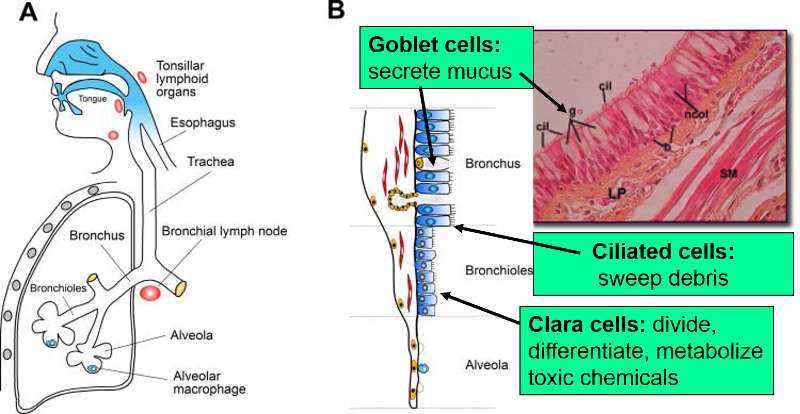The Respiratory Tract
Cells Lining the Respiratory Tract
Respiration continually brings air from the environment in contact with the delicate cells in our lungs to provide oxygen and to expel carbon dioxide, which is a by product of metabolism. Nevertheless, inspired air can also carry chemical and particulate contaminants which can be harmful, and several mechanisms have evolved to mitigate the effects of these contaminants. Nasal hairs and mucus can trap dust and other particulate matter.
Stem cells in the respiratory epithelium give rise to progenitor cells that differentiate into several cell types whose function is critical to respiration. Clara cells are complex cells whose structure and function changes depending on circumstances. They can differentiate into mucus-secreting "goblet" cells; a mucus layer on the epithelial cell surfaces protects the cells and traps dust and other foreign material. Clara cells can also differentiate into ciliated cells which have hair-like projects that move rhythmically and sweep mucus and trapped particles upwards where it can be either swallowed or expectorated.
that differentiate into several cell types whose function is critical to respiration. Clara cells are complex cells whose structure and function changes depending on circumstances. They can differentiate into mucus-secreting "goblet" cells; a mucus layer on the epithelial cell surfaces protects the cells and traps dust and other foreign material. Clara cells can also differentiate into ciliated cells which have hair-like projects that move rhythmically and sweep mucus and trapped particles upwards where it can be either swallowed or expectorated.

Source: Adapted from http://www.influenzareport.com/ir/pathogen.htm
The brief video below illustrates the functions of these cells.


